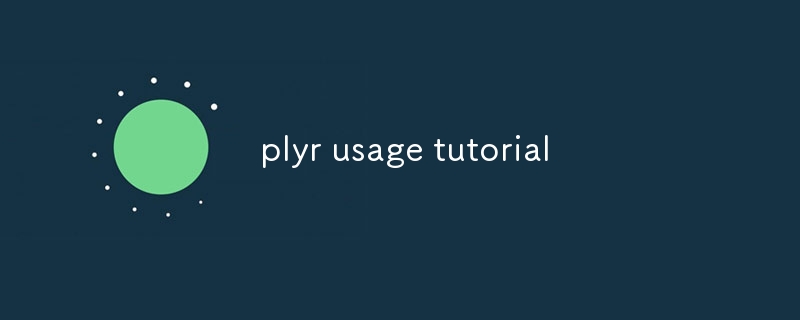
The plyr package, providing functions for splitting, applying, combining, and summarizing data, offers concise data manipulation capabilities. Key functions include split to divide data by variables, lapply to apply a function to a list, and apply to

How to manipulate data in R using the plyr package?
The plyr package provides a suite of functions for data manipulation in R. It offers a consistent and concise syntax for common data manipulation tasks, making it easier to work with large and complex datasets. The plyr package includes functions for splitting, applying, combining, and summarizing data.
What are the key functions of the plyr package and how to use them?
How to create summary statistics and perform data transformations with plyr?
How to use the plyr package for advanced data manipulation tasks?
The plyr package can be used for a wide range of advanced data manipulation tasks, including:
The above is the detailed content of plyr usage tutorial. For more information, please follow other related articles on the PHP Chinese website!
 What plugin is composer?
What plugin is composer? How do I set up WeChat to require my consent when people add me to a group?
How do I set up WeChat to require my consent when people add me to a group? How to take screenshots on Huawei mate60pro
How to take screenshots on Huawei mate60pro How to use jsp programming software
How to use jsp programming software A complete list of commonly used public dns
A complete list of commonly used public dns Characteristics of relational databases
Characteristics of relational databases function function usage
function function usage How to hide drive letter
How to hide drive letter



